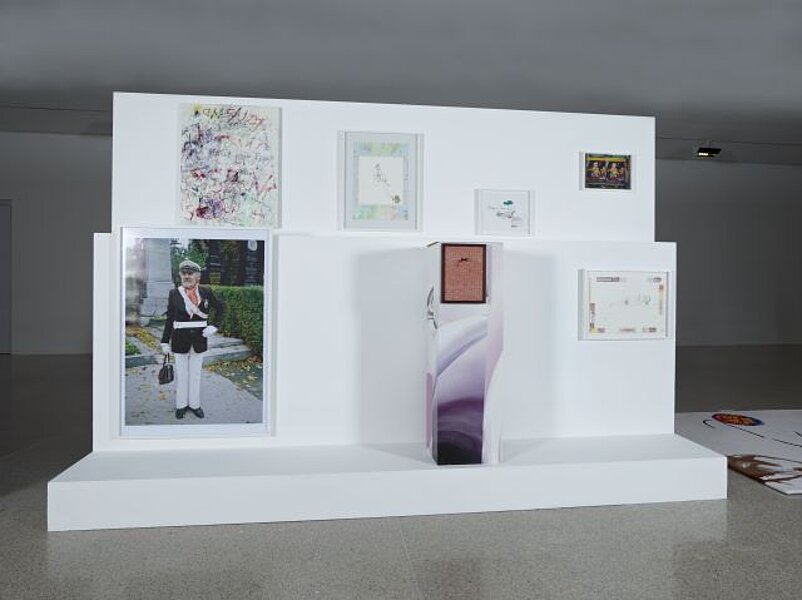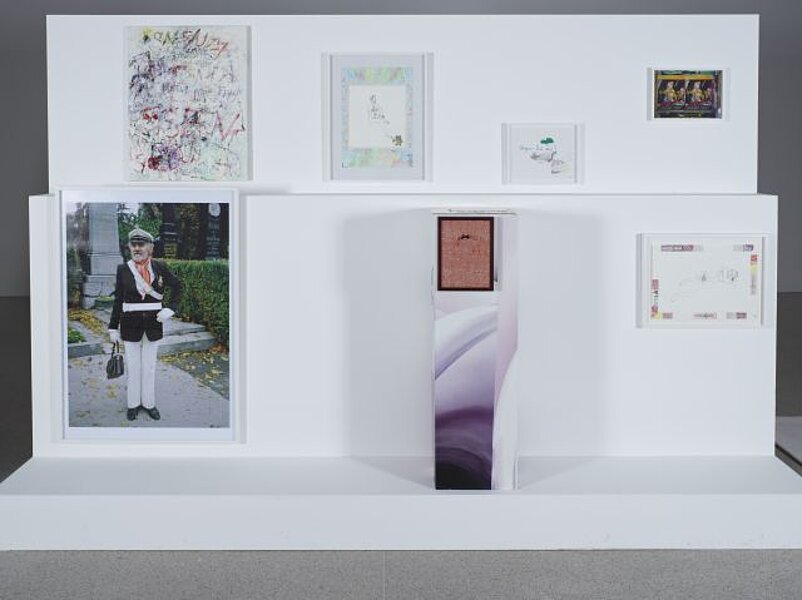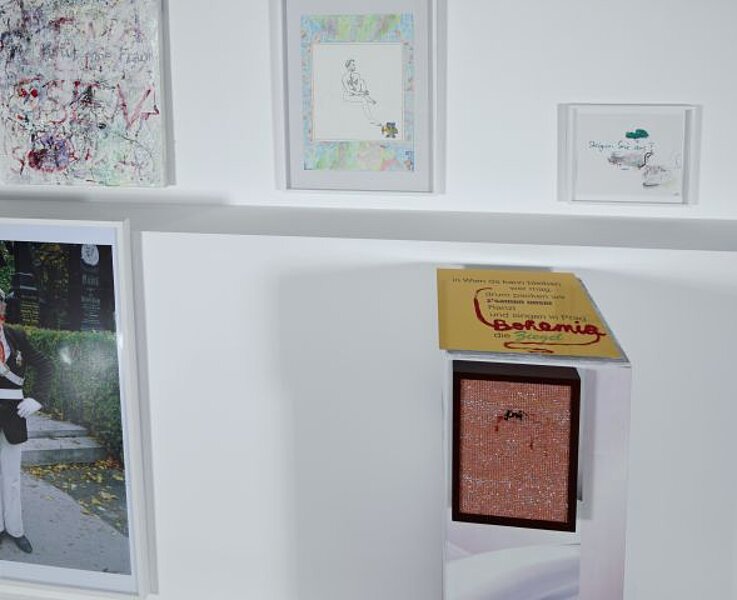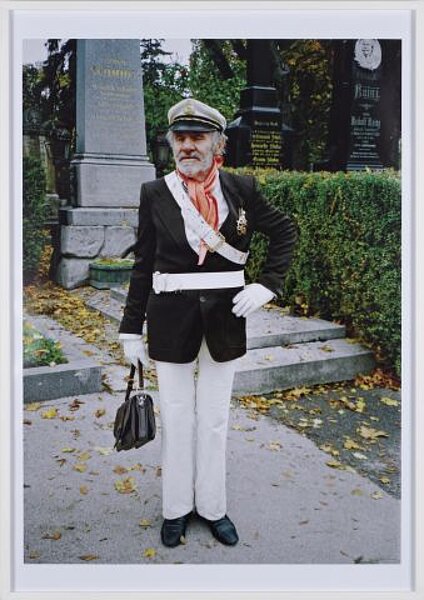
Dengler, Verena
Fantastischer Sozialismus, II
2013
| Object description | Installation |
|---|---|
| Object category | sculpture |
| Dimensions |
Objektmaß:
height: 200 cm,
width: 300 cm,
depth: 62 cm
|
| Year of acquisition | 2013 |
| Inventory number | P 673/0 |
| Creditline | mumok - Museum moderner Kunst Stiftung Ludwig Wien, erworben mit Unterstützung des BKA, Sektion Kunst |
| Rights reference | Bildrecht, Wien |
| Further information about the person | Dengler, Verena [GND] |
The subtler, the sharper: Verena Dengler is an expert in pointed allusions. She combines pictures, sculptures, textiles, and found materials to form a poetic cosmos, in which reality, everyday life, and banality twinkle and shine out like stars. Historical and political details are linked with refl exes to the economic conditions of the artist’s own subsistence, and arthistorical genealogies with quotations from pop culture. Dengler is interested in the moments of transition, when mass phenomena meld with the fi nest judgments of taste, and naivety with a deep sense of irony. The formal unity of these works is established by their plinth-like elements, reminiscent of both educational establishments and chic design and advertising displays. Dengler wallpapers these plinths; she leans embroidered pictures against them; and arranges various artworks around them. “What I want,” Dengler says, “is to emphasize the time and the intensity of these small objects, and to attempt to build a structure that protects their idiosyncrasies.” In this works Dengler analyzes specifically Austrian conditions and systems for the promotion of the fi ne art, with their primarily social democratic roots. Since the 1970s, a state-fi nanced liaison between advanced and contemporary high art and social commitment provided the fruitful ground for artistic positions and even entire art movements that would have found it almost impossible to compete in any international market environment. This led to idiosyncratic solutions and anachronisms, the logic of which Dengler explores in her art. Her aim is not, however, to just joke at what seem to be provincial positions. Rather, she searches for the moment of transfer, when the backwardness of regional idiosyncrasies can turn into an international trademark—or the other way around. The exhibition title, Fantastic Socialism, refers not least to the fantastic realists, a group of artists who gained great popularity with representations of naked women in psychedelic landscapes and Dürer-like youths. They are just as firm an element in Austria’s art landscape as the characteristic green rings of Gmundner tableware, which in turn are reminiscent of psychedelic action painting. Dengler makes old and obsolete slogans and out-of-the-way hackneyed means of expression collide with very contemporary forms and developments. This artistic intervention means that whatever is seen as contemporary now appears less unequivocally so. “My installation for mumok is like a (nightmare) dream landscape, in which elements from my childhood in Vienna and from the clichés of today appear and are confronted with less wellknown Austrian labor culture.” Like a flaneur, in her art Dengler slides between various social spheres and aesthetic codes, and she pointedly articulates the lived contradictions between Austrian nostalgia and advanced high art, the stiff mentality of public offi ce and subjective eccentricity. Painterly traces, language, and craftsmanship all enter into different constellations—in both the idiom of signs in the individual works and their combinations within the exhibition installation.
© mumok – museum moderner kunst stiftung ludwig wien





